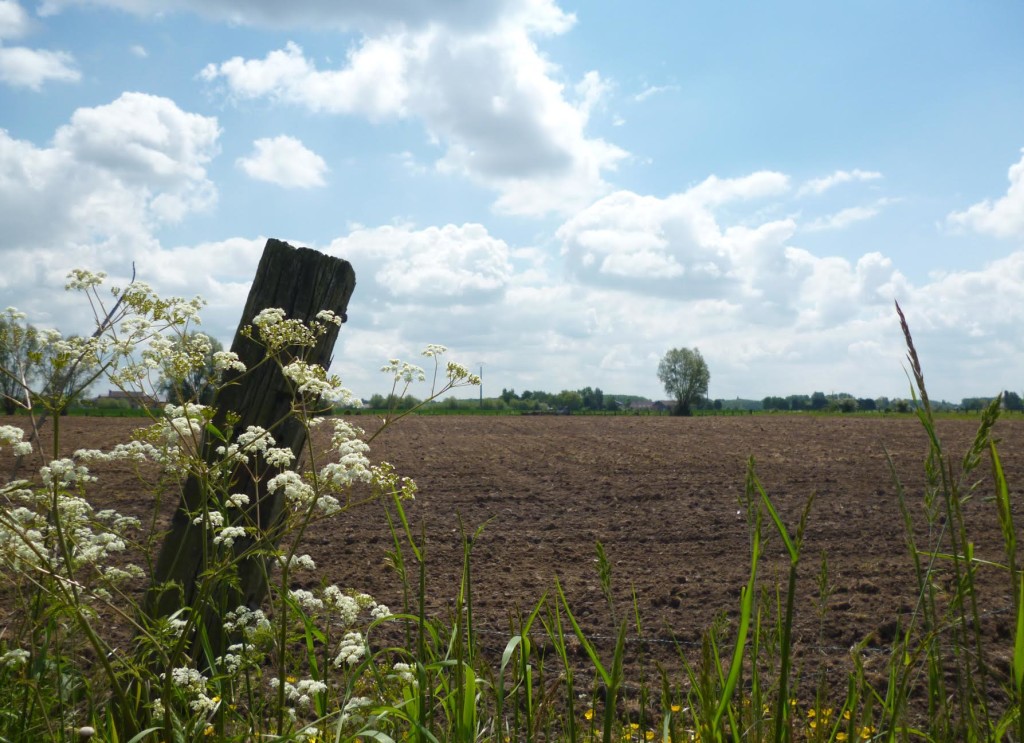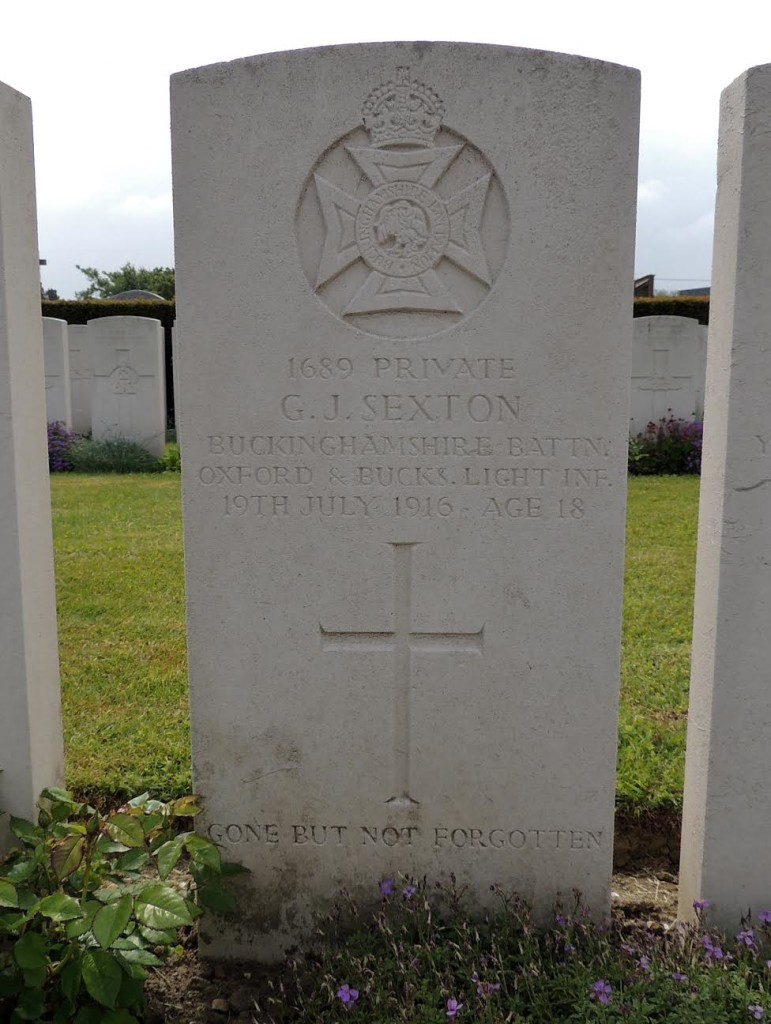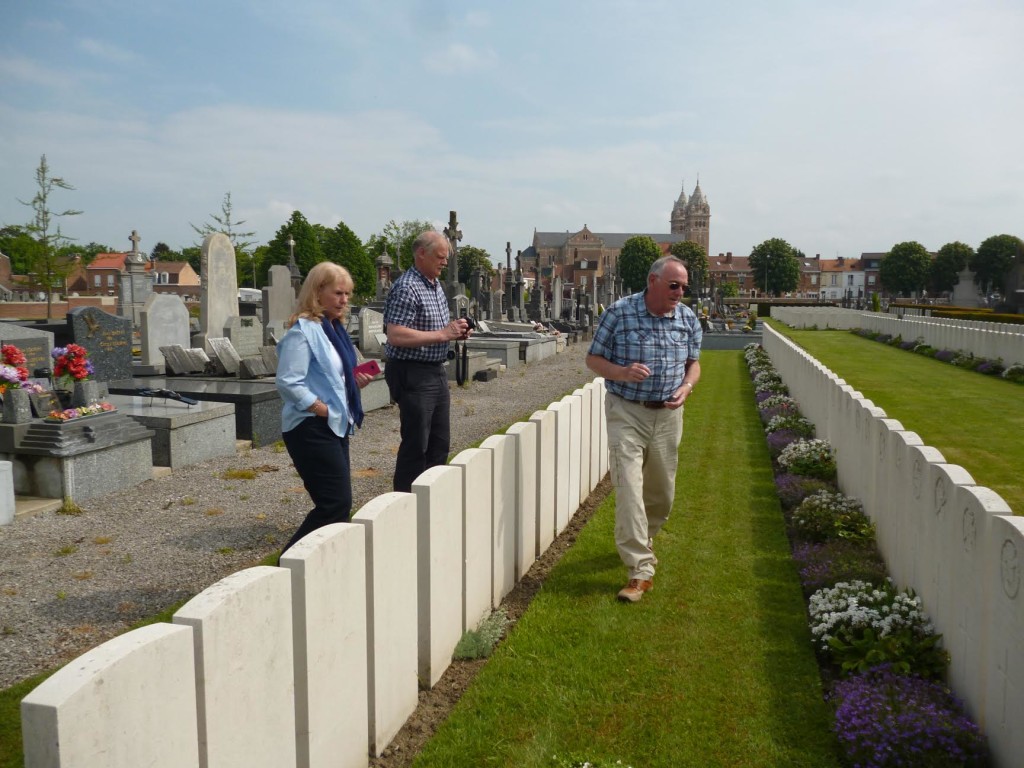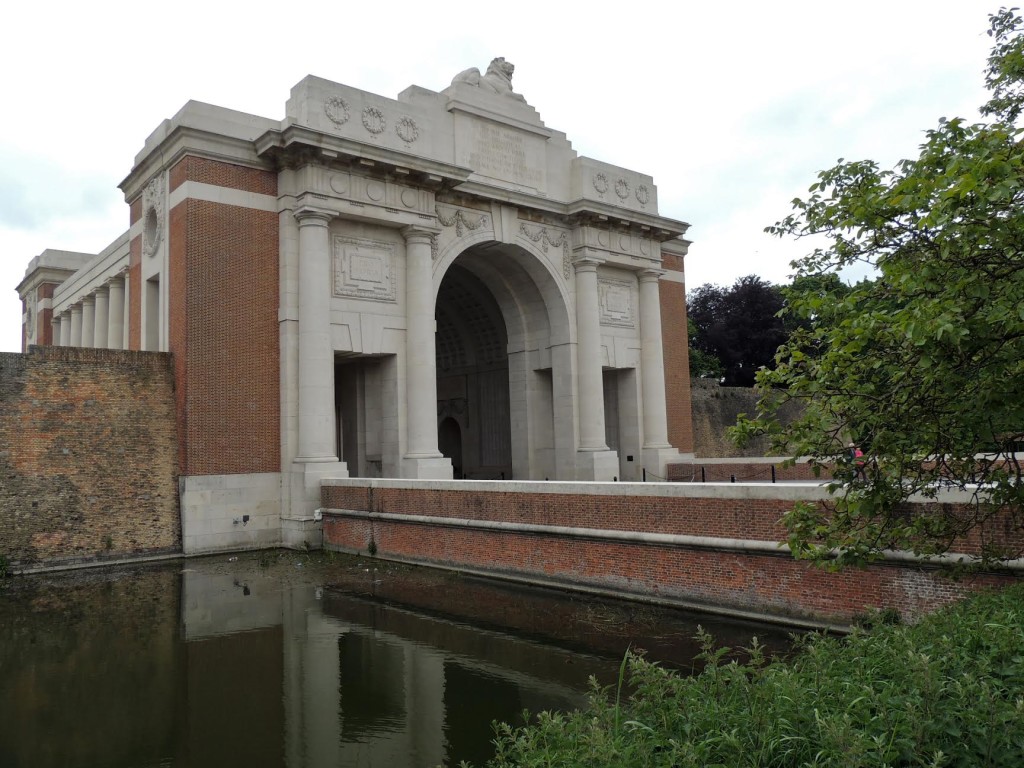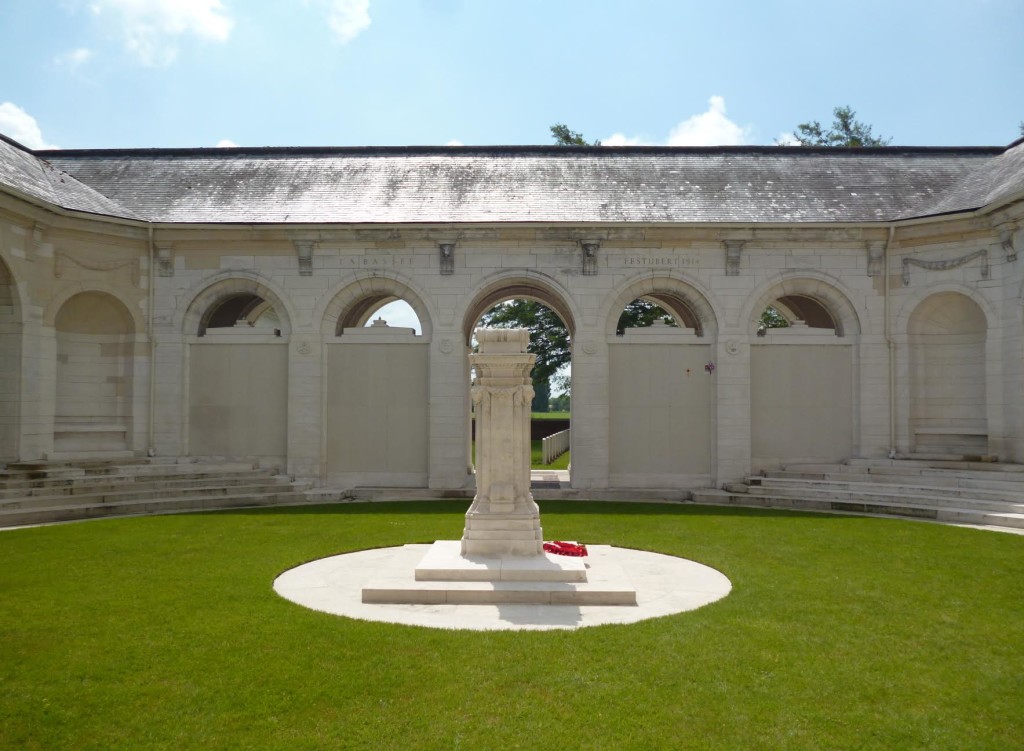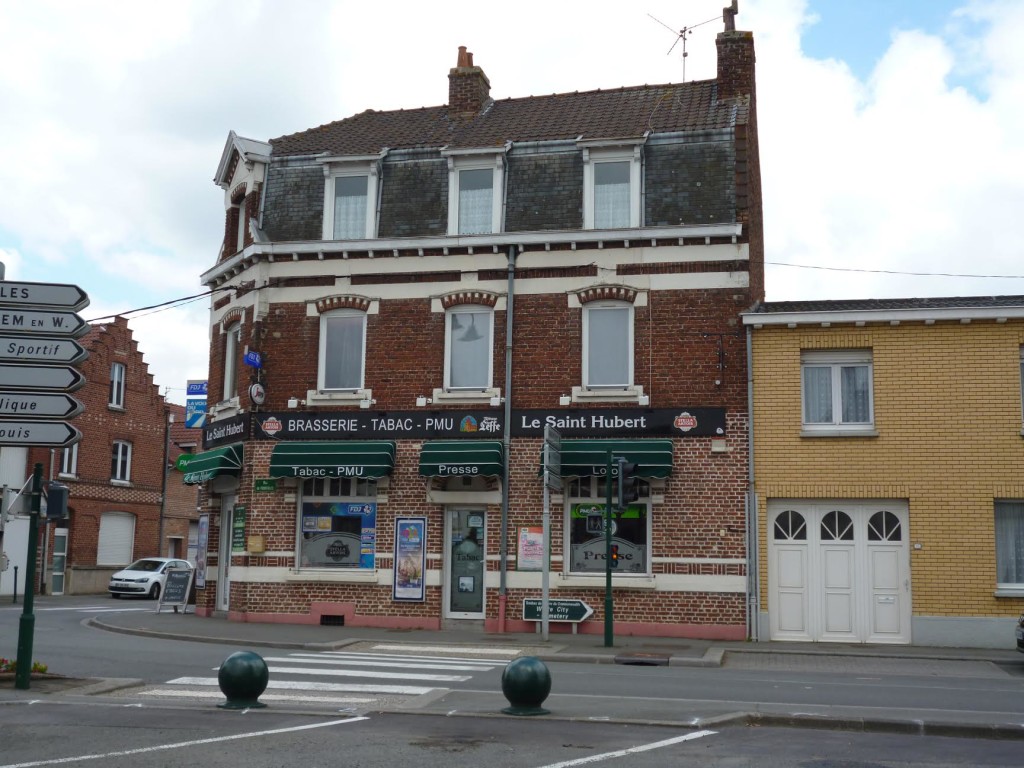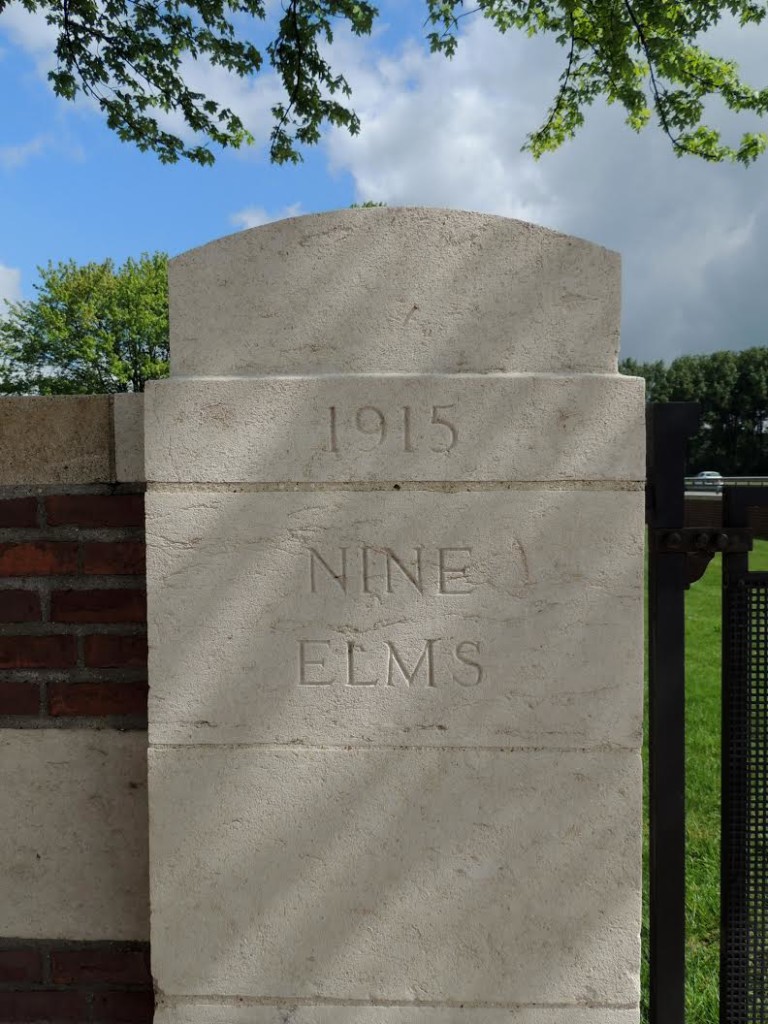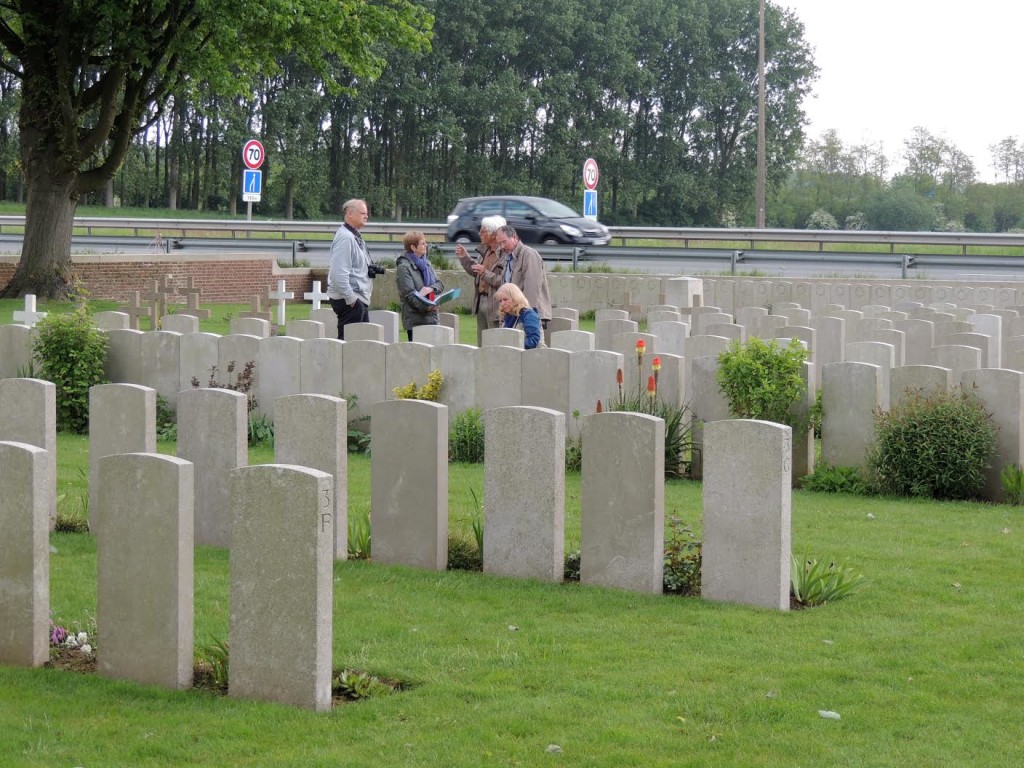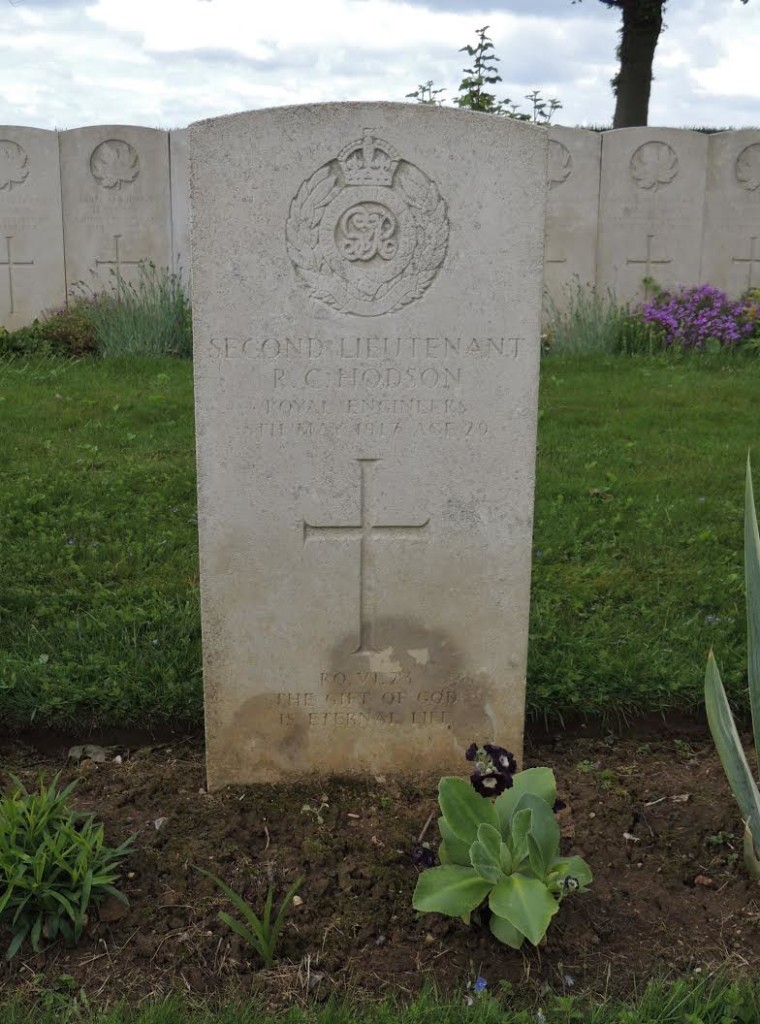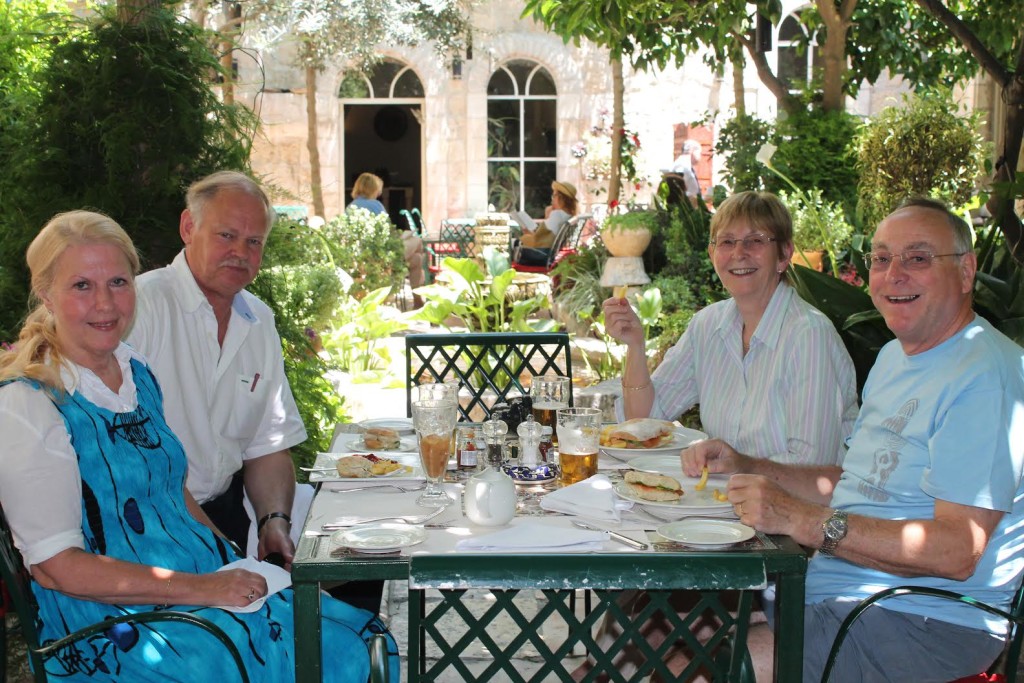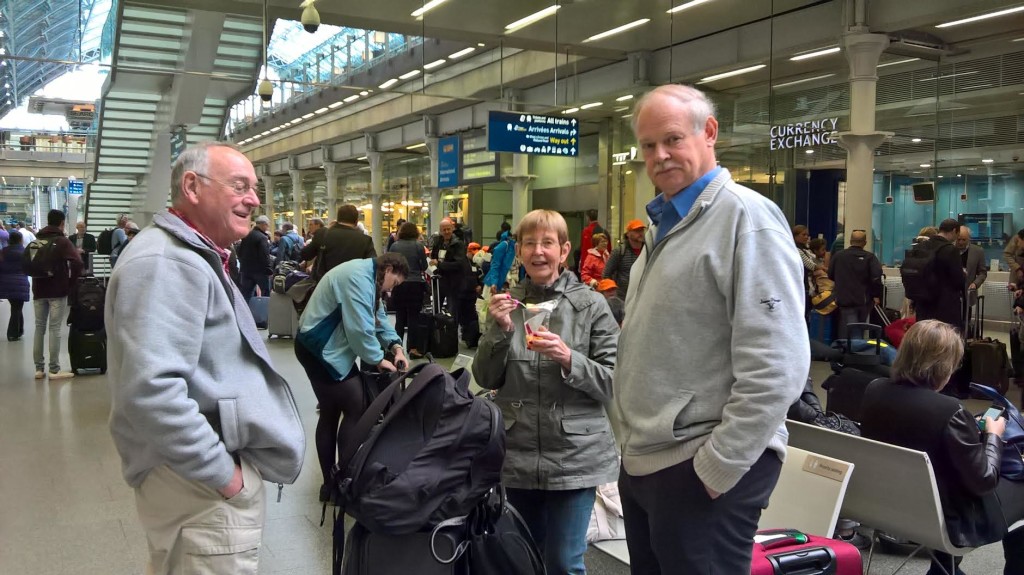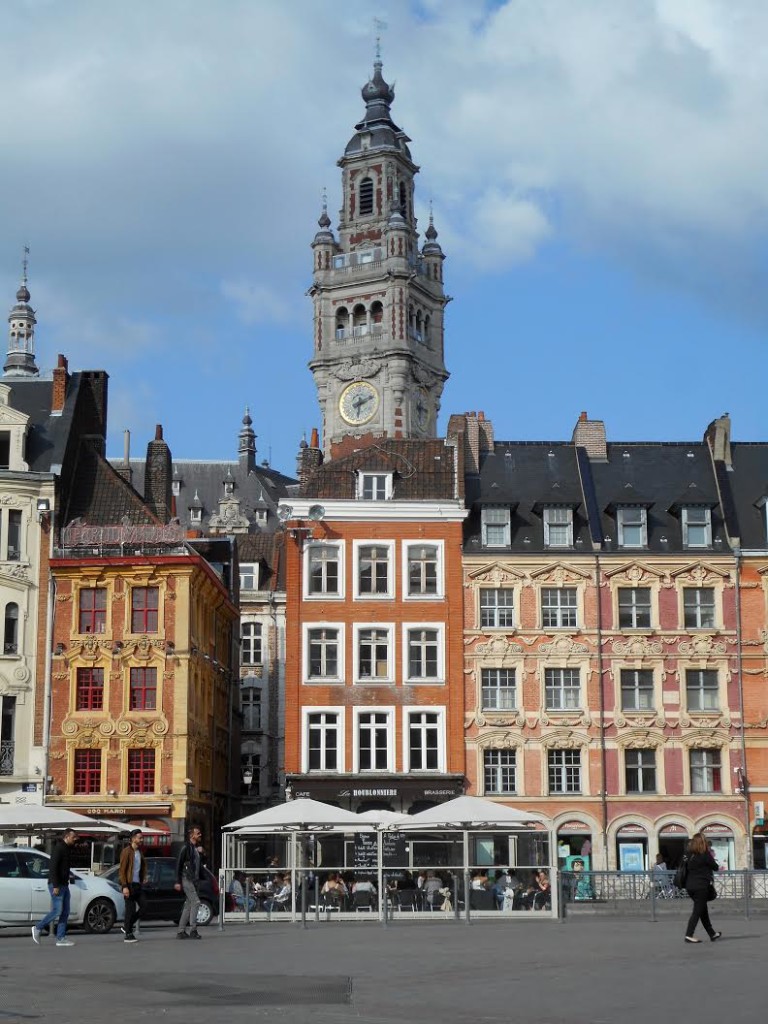Lieutenant Colonel Harry Vivian Robert Hodson
The Gerrards and the Hodsons had completed a moving but successful first day travelling round the Somme and as our schedule only allowed us two days in the battlefield area we were up and about early on our second day, ready to find another one of Richard’s family members – this time his grandfather Harry Vivian Robert Hodson – Lieutenant Colonel of the North Staffordshire Regiment. He was second in command of the 15 Royal Welsh Fusiliers which landed in France in January 2016 and, after a period of training, deployed in trenches in the area of Laventie.
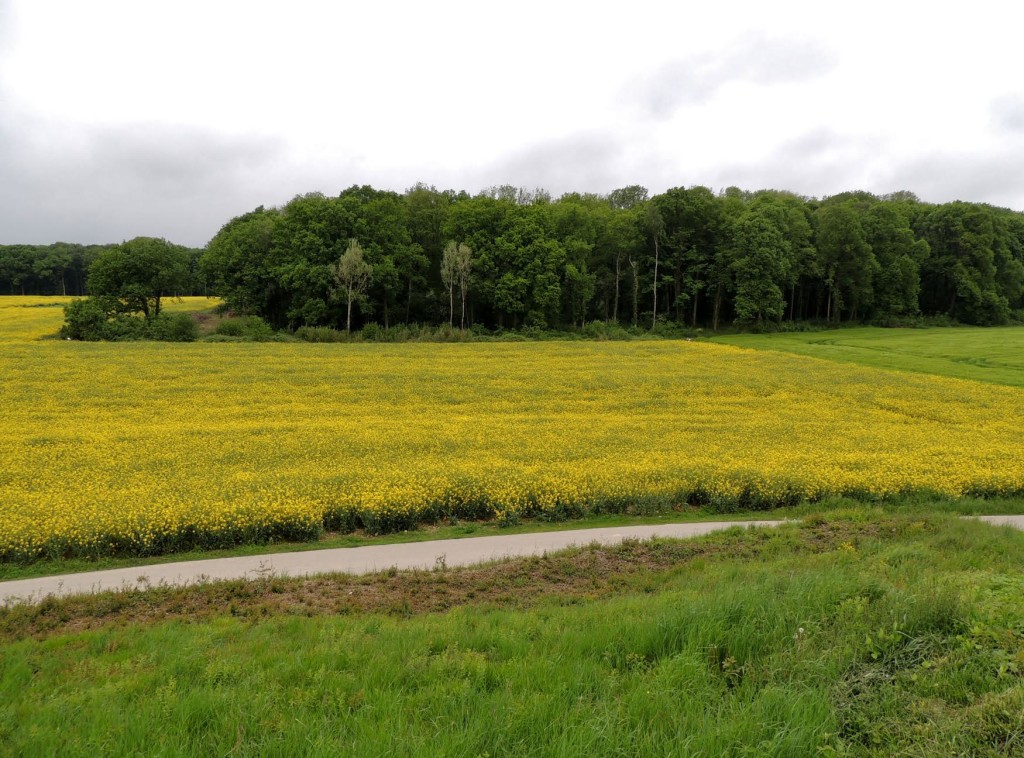 Mametz Wood across the field of Oil Seed Rape
Mametz Wood across the field of Oil Seed Rape
Our first destination of the morning was the infamous Mametz Wood which stands much as it always did in the middle of open rolling countryside. What made it very different from how it would have looked on the day of the attack was the sea of yellow oil seed rape in which the wood now sat. Then it would probably have been a sea of mud. We walked up to the amazing red dragon memorial to the 15 Royal Welsh Fusiliers which sits on the small hill over which the battalion climbed before descending into the narrow flat area leading across to the wood.
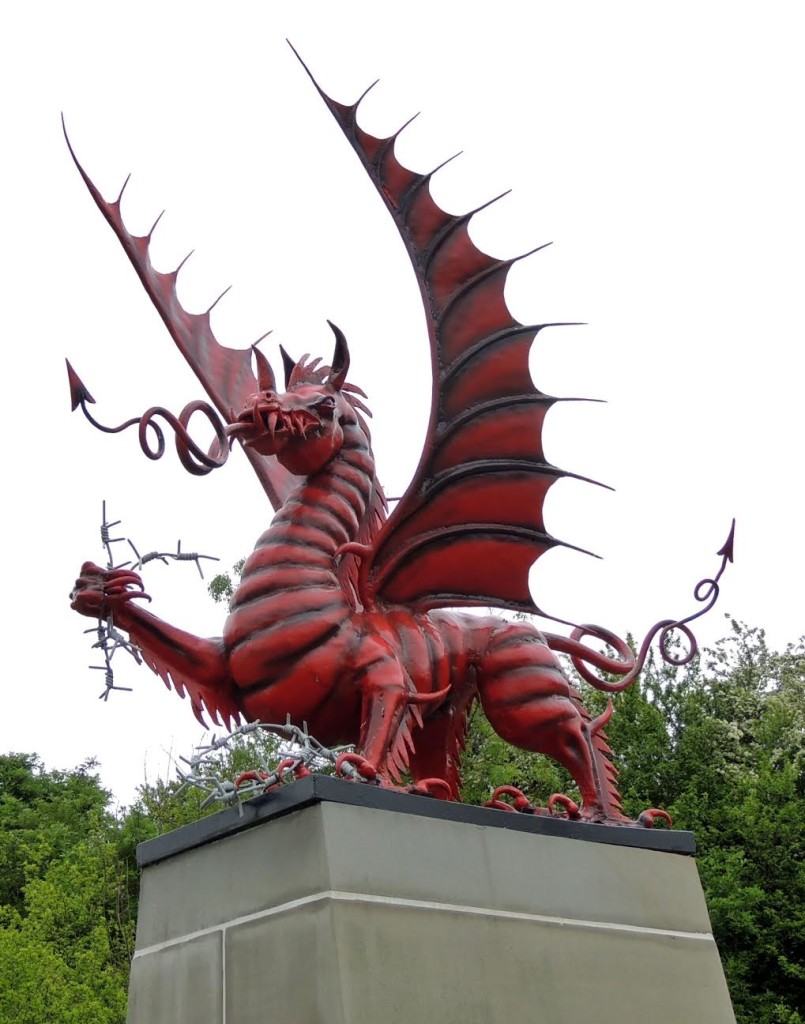 The Red Dragon Memorial to the 15 Royal Welsh Fusiliers
The Red Dragon Memorial to the 15 Royal Welsh Fusiliers
The battalion took part in the attack on the wood as part of the Somme offensive, in the face of fire from both sides of the valley and from the heavily fortified wood. Even walking across the field towards the wood through the golden yellow flowers on a sunny early summer morning with birds singing all around us, I could still feel the atmosphere of that place. Standing where I was one hundred years before would have meant almost certain death. The battalion lost 12 officers and 252 other ranks killed or wounded in that offensive. A dreadful day.
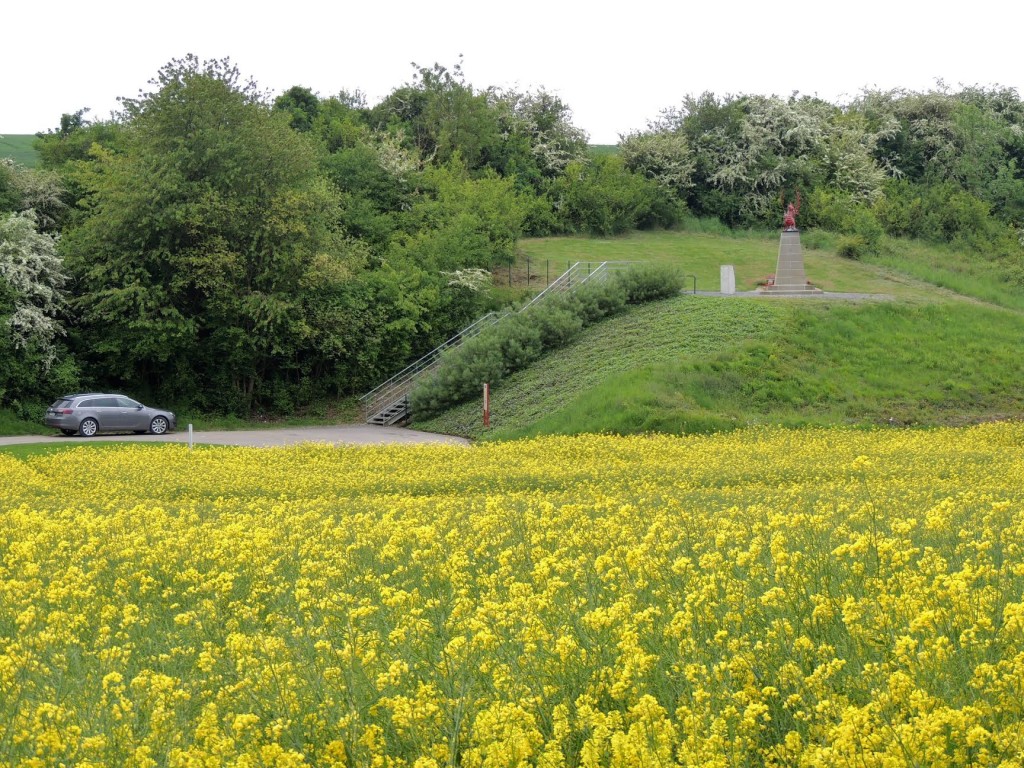 “ Taken from the field the battalion crossed to reach Mametz Wood looking back at the memorial”
“ Taken from the field the battalion crossed to reach Mametz Wood looking back at the memorial”
Lieutenant Frederick William Watkins
We had more of Harry’s Somme history to investigate later, but we had one more family member to track down first – Richard’s great uncle and the elder brother of his maternal grandmother. Frederick William Watkins was a Lieutenant of 36 Jacobs Horse, Indian Army. He was one of the survivors of the Great War so we were glad not to be searching for a grave or memorial. He fought at the battle of Cambrai from 20 November to 4 December 1917 and later in 1918 with the Egyptian Expeditionary Force against the Turks in Mesopotamia (modern day Iraq). He remained in the Indian Army after the war and was later discharged from the army in 1942 on medical grounds. He died aged 86.
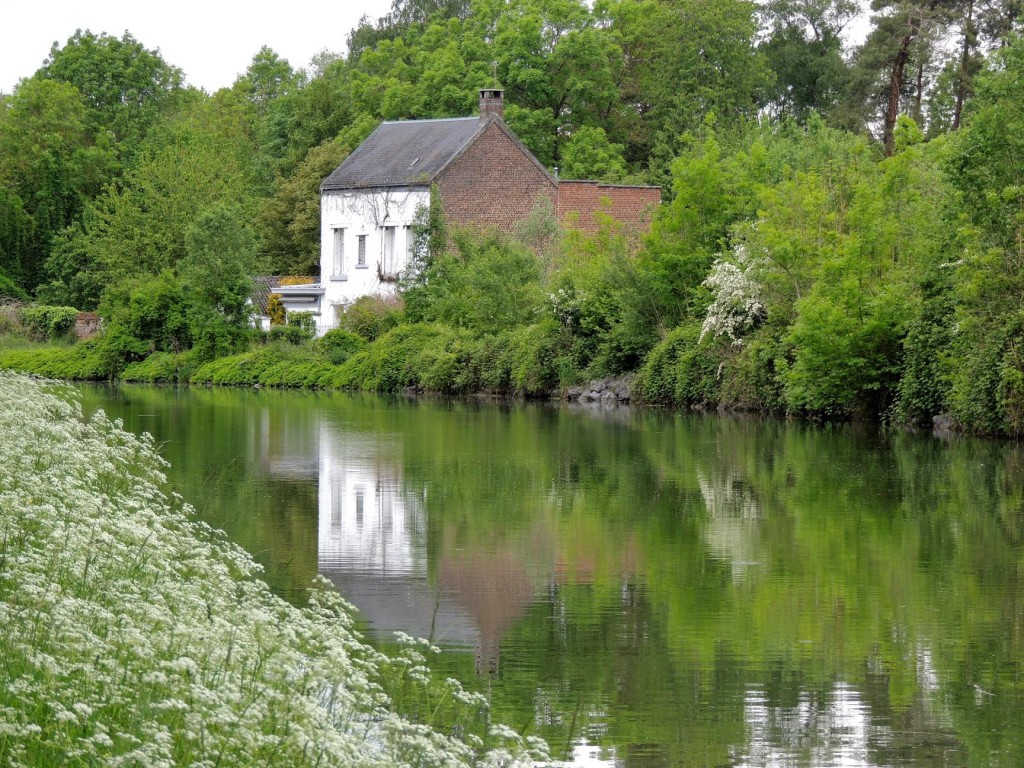 “The Canal d’Escaut as it is today”
“The Canal d’Escaut as it is today”
Richard was keen to visit the site of an operation which did not work out as planned in which his great uncle was involved and we soon found ourselves at a bridge across the Canal de L’Escaut at Masnieres. The canal was still and peaceful and we enjoyed a gentle walk along its banks before returning to the sturdy bridge near the Masnieres War Memorial to find a place to eat the baguettes we had thought to bring with us this time.
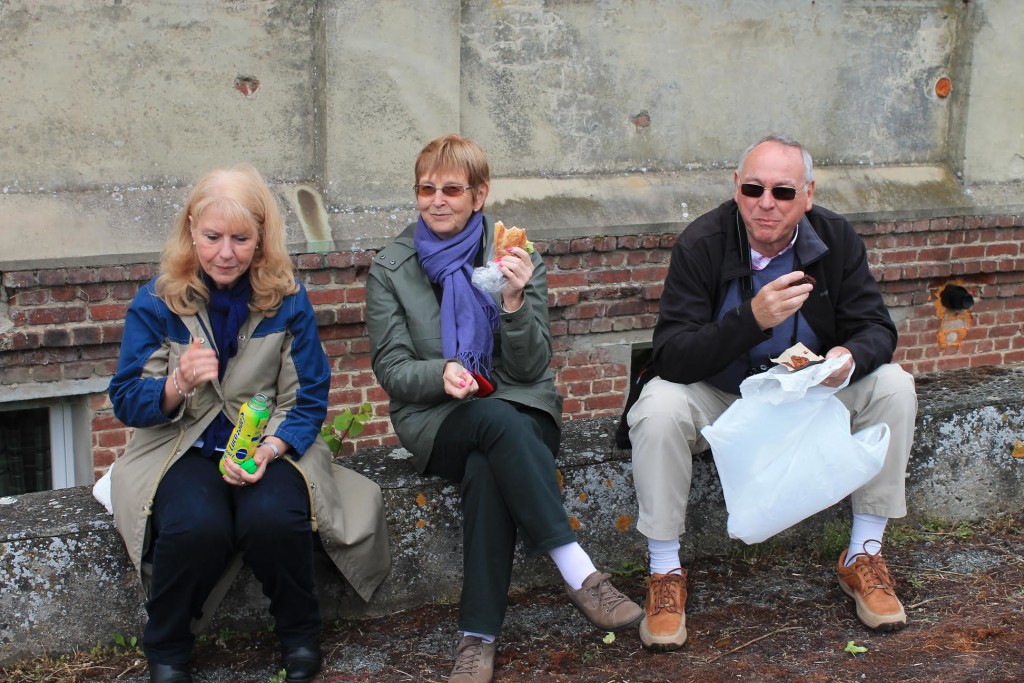 “No one does baguettes like the French!”
“No one does baguettes like the French!”
Richard described to us how, on 20 November 2017, Frederick’s first action as second in command of a cavalry squadron was to follow up the tanks and infantry on foot and bridge the Hindenburg Line where a breach was made to allow the Cavalry Divisions to exploit any break through. The task was completed by 11 am, under spasmodic shell fire, but the leading Cavalry Brigade appeared two hours late and the opportunity for a real breakthrough across the canal was lost. An information board by the modern bridge shows the embarrassing image of the first of the British 28 ton Flying Fox tanks proving too much for the bridge and sinking on the broken bridge towards the water below.
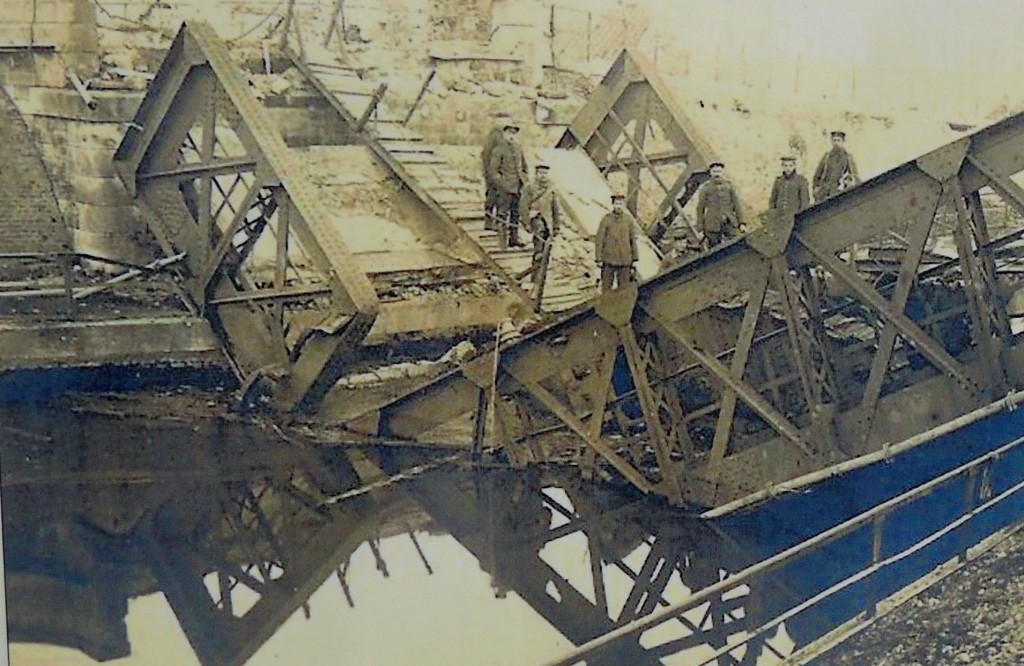 “The destruction of the bridge over the Canal d’Escaut”
“The destruction of the bridge over the Canal d’Escaut”
From 29 November onwards Frederick was involved in dismounted operations to halt the German counter attack between Gouzeaucourt and Epehy in the area of Vaucellette Farm.

